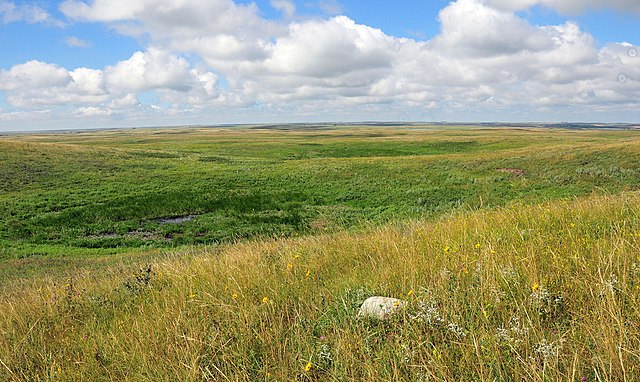The soothing whisper of grass in the wind. Whistling birds. Rhythmically croaking frogs. The percussive hum of insects. Water trickling through a stream.
The Earth sings a beautiful song.
However, nature’s music is too often drowned out by traffic, power plants or chattering crowds. So, in this feature of Rootstalk, I wanted to bring the music to you by assembling a collection of animal and insect sounds heard during the day and night in the Prairie Pothole Region (PPR), an area of depressional freshwater marshes that spans across three Canadian provinces (Saskatchewan, Manitoba, and Alberta) and six U.S. states (Minnesota, Iowa, North Dakota, South Dakota, Wisconsin, and parts of Montana).
I chose to focus on this region for three reasons. First, I wanted to emphasize that the prairie is not just tall grasses, but includes other types of habitat as well. Second, I wanted to help preserve PPR in digital form, as 50 to 60 percent of the region has been destroyed due to climate change and drainage for agriculture. Finally, I chose the PPR because it is home to a diversity of lif—and thus a diversity of sounds. While not all the media featured in this article were taken from the PPR, it was all taken from the general prairie region, and all the animals and insects featured here can be found in the PPR.
While listening to the animals and insects featured in this piece, I hope you enjoy their vocalizations and imagine them singing in a symphony together. I also hope that next time you’re outside, you’ll take a moment to appreciate nature’s music.
The Earth sings. Let us not forget to listen.
Description of the Prairie Pothole Region adapted from text from the United States Environmental Protection Agency.
Day
Northern Harrier Hawk
(Circus hudsonius)
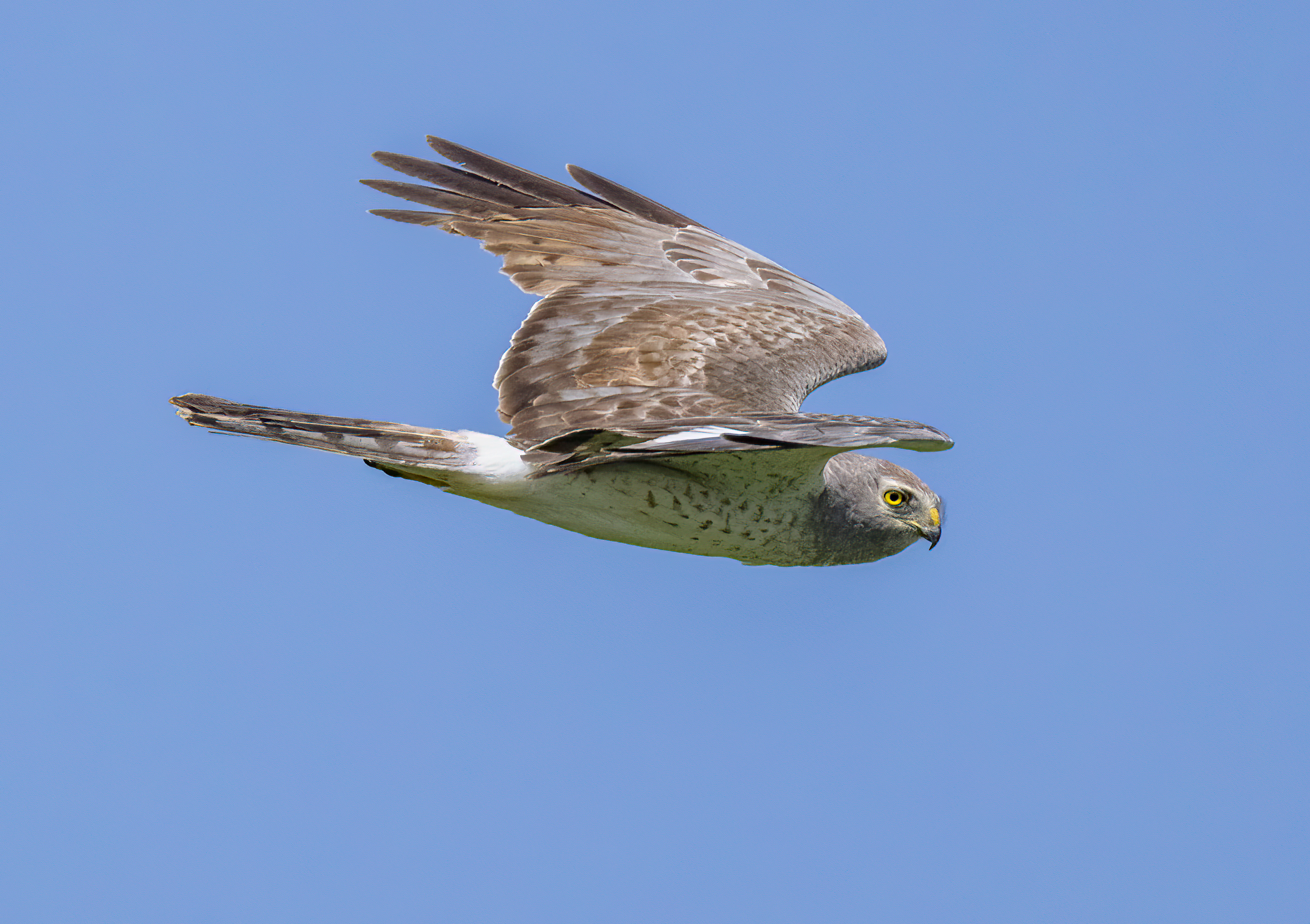
Photo courtesy of Macaulay Library,, taken by Iris Kilpatrick on June 10th, 2023 in Sibley Lake, Kidder, North Dakota.
During the summer, the northern harrier can be found breeding, nesting, roosting, and hunting in the PPR. The Northern Harrier vocalizes in a number of different ways, including a series of short, medium-pitched notes during courtship displays, piercing cries from females during breeding season, and higher-pitched notes when they are threatened. While northern harriers are not endangered, their numbers appear to be decreasing due to habitat loss.
Description adapted from text created by Hawk Mountain Global Raptor Conservation and Cornell Lab of Ornithology.
Gadwall Duck
(Mareca strepera)
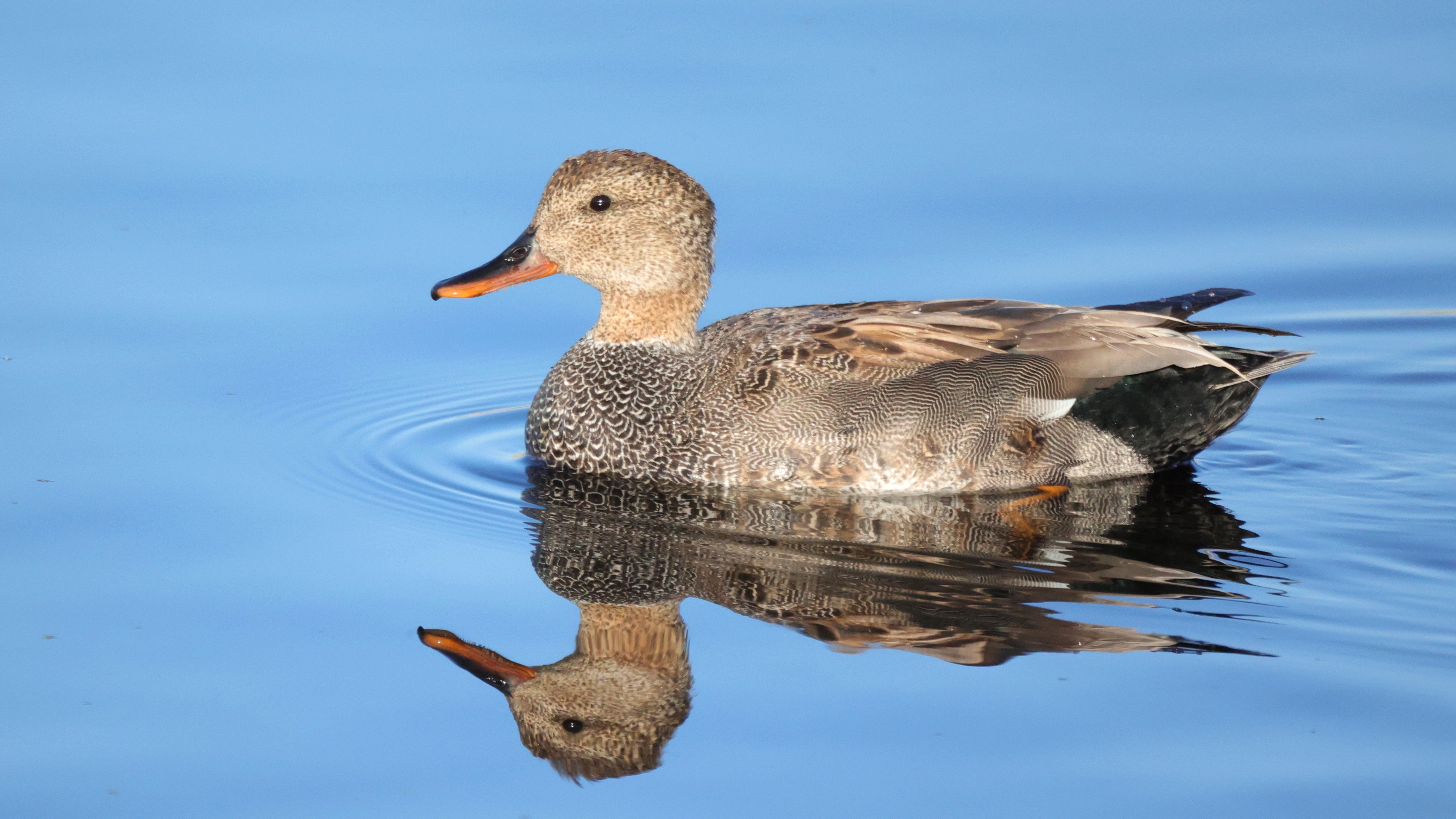
Photo courtesy of Macaulay Library, taken by Curtis McCamy on May 16th, 2021, in North Robinson, Kidder, North Dakota.
Now the fourth-most-populous duck in North America, the gadwall has thrived in the modern prairie landscape. The gadwall breeds and nests in the PPR and is notorious for stealing food from other birds. Male gadwalls make short, deep, husky calls, known as “burps,” given in steady succession, along with high whistles. Females give a nasal quack.
Description adapted from text created by the Cornell Lab or Ornithology and Ducks Unlimited.
Boreal Chorus Frog
(Pseudacris maculata)
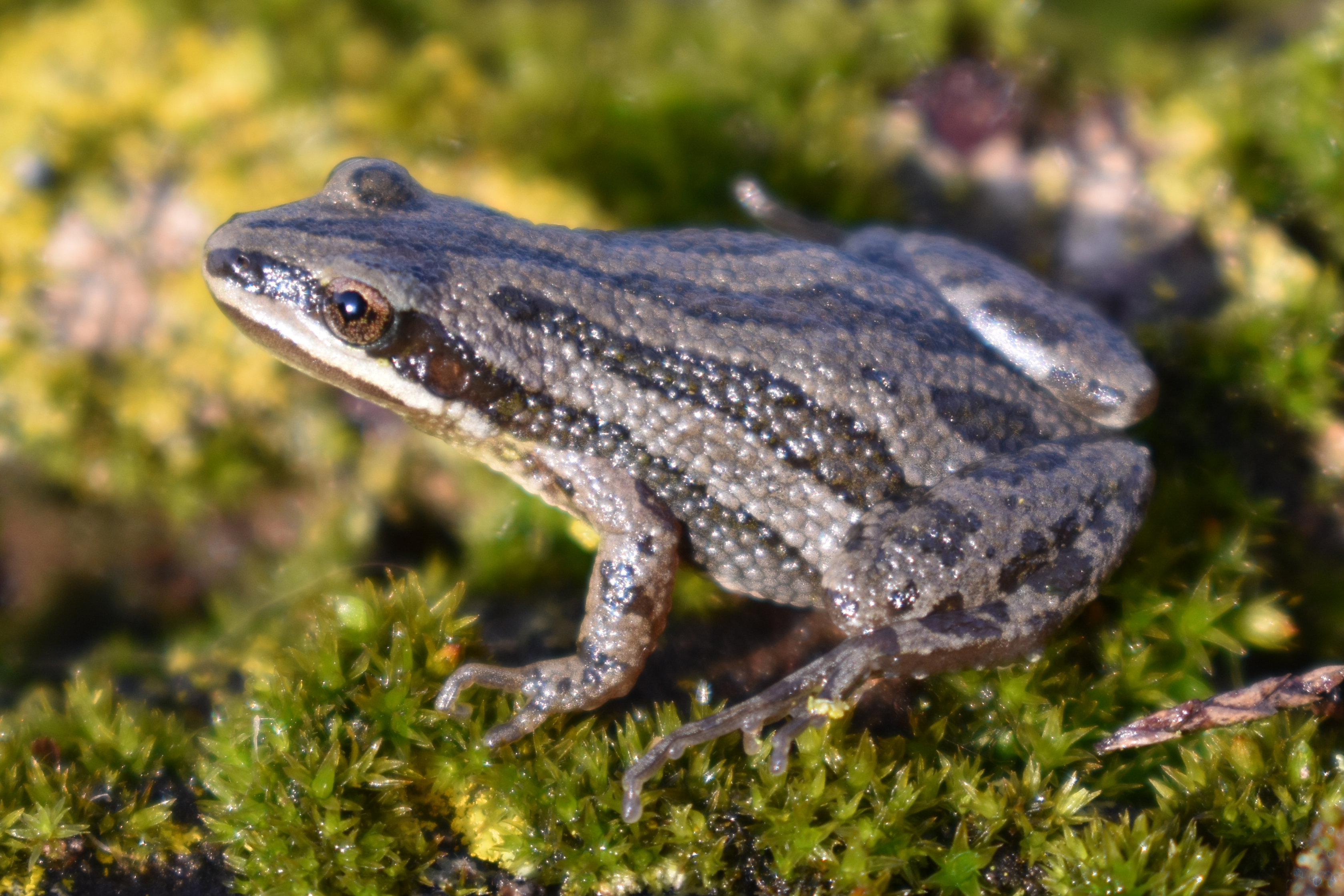
Photo courtesy of Drew R. Davis from Amphibians and Reptiles of South Dakota , taken in Douglas County, South Dakota.
Averaging just over one inch in length, the boreal chorus frog is loud despite its small size. Males call night and day to attract females in the breeding season, which begins in late February and lasts through May. The breeding call consists of metallic clicks that rise in pitch, resembling the sound of fingers running along the teeth of a comb. Despite a slight decline over the past forty years, the population of boreal chorus frogs remains widespread and at low risk of extinction.
Description adapted from text created by Amphibians and Reptiles of South Dakota, Missouri Department of Conservation, University of Nebraska-Lincoln and Defenders of Wildlife
Night
Short-Eared Owl
(Asio flammeus)
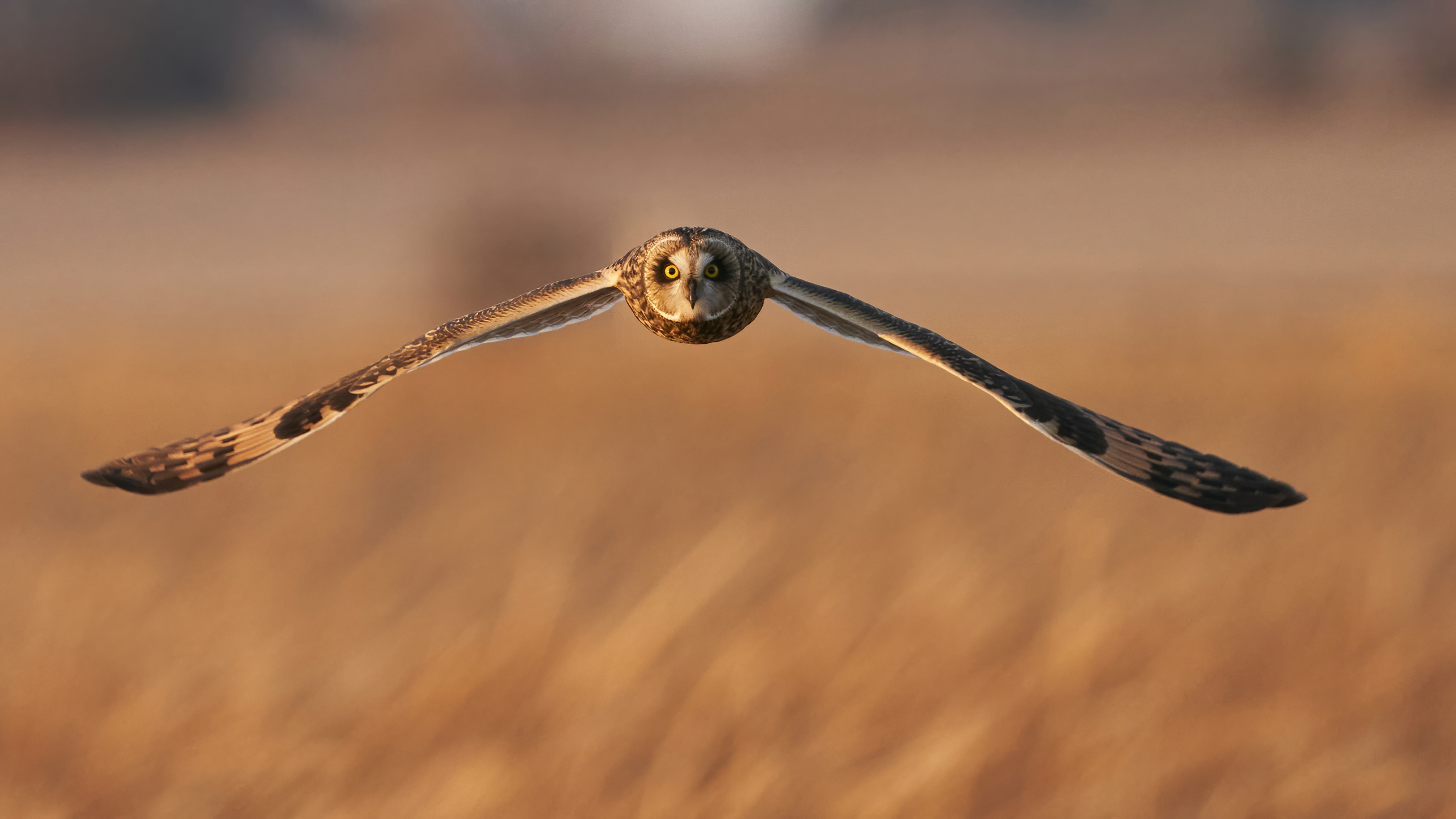
Photo courtesy of Macaulay Library , taken by Dana Siefer on November 21st, 2022, in Little Storm Lake, Buena Vista, Iowa.
Although it is usually silent, the short-eared owl can make a variety of sounds, including hisses, screeches, whines, and hoots. The most commonly made sound by both males and females is a wheezy, barking “kee-ow.” Males also engage in wing-claps as part of their courtship display or to signal aggression. This involves snapping their wings together below their body, making a sound like applause. While short-eared owls are generally ranked as a species of low conservation concern, they are experiencing long-term declines in population due to habitat loss.
Description adapted from text created by The Sound Approach, BirdNote, and the National Park Service.
Great Plains Toad
(Anaxyrus cognatus)
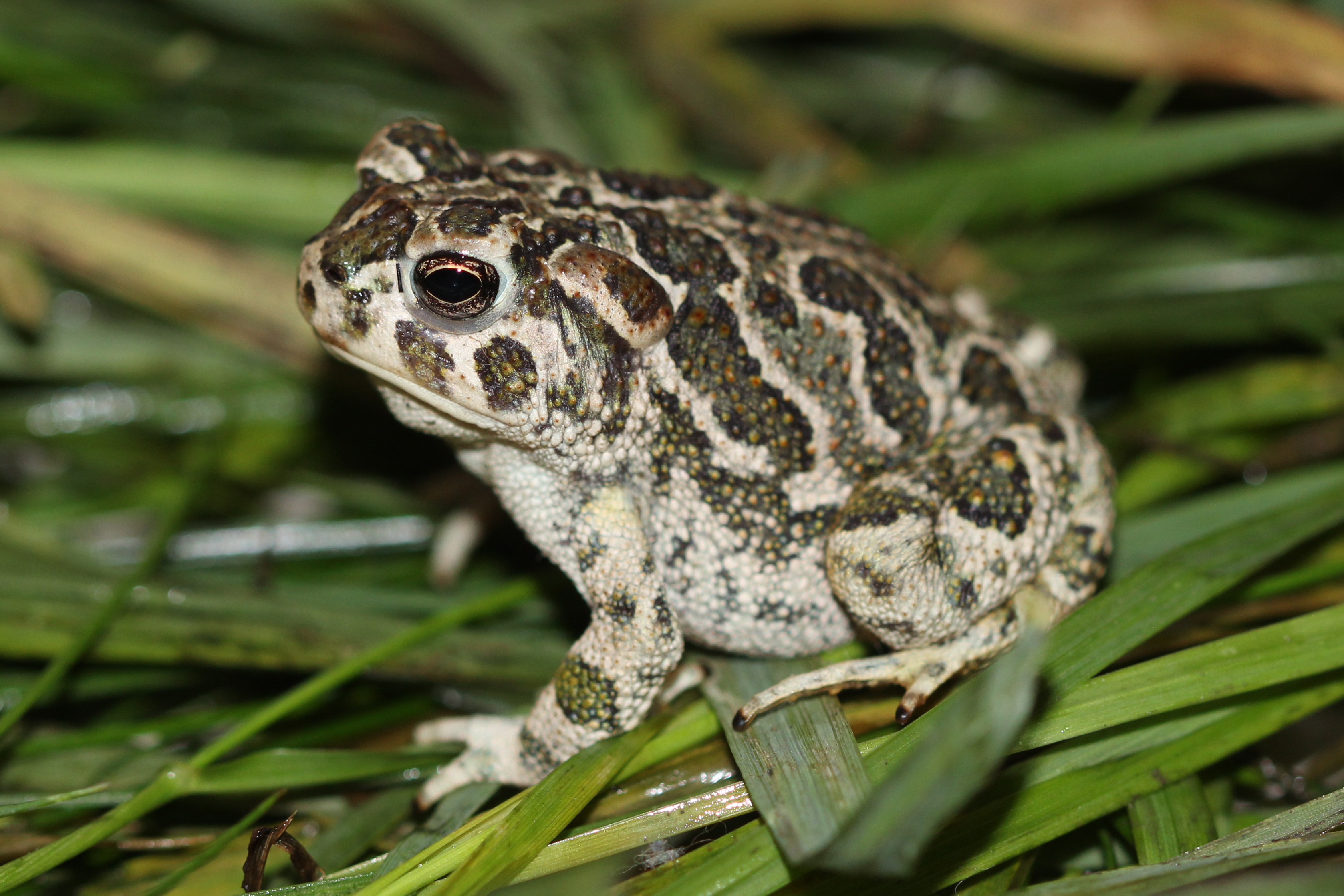
Photo courtesy of Drew R. Davis from Amphibians and Reptiles of South Dakota, taken in Hand County, South Dakota.
Great plains toads spend most of their time buried underground. However, they become more active during breeding season, emerging to call for mates. Their vocal sac inflates, and they release an extended, vibrating trill, which lasts anywhere from ten to fifty seconds in duration. The powerful sound has been compared to a high pitched jackhammer and can carry over a distance of one mile. As a population, the great plains toad remains relatively stable but is threatened by habitat loss and drought due to climate change.
Description adapted from text created by Amphibians and Reptiles of South Dakota, Montana Field Guide and NatureServe Explorer.
Northern Leopard Frog
(Lithobates pipiens)
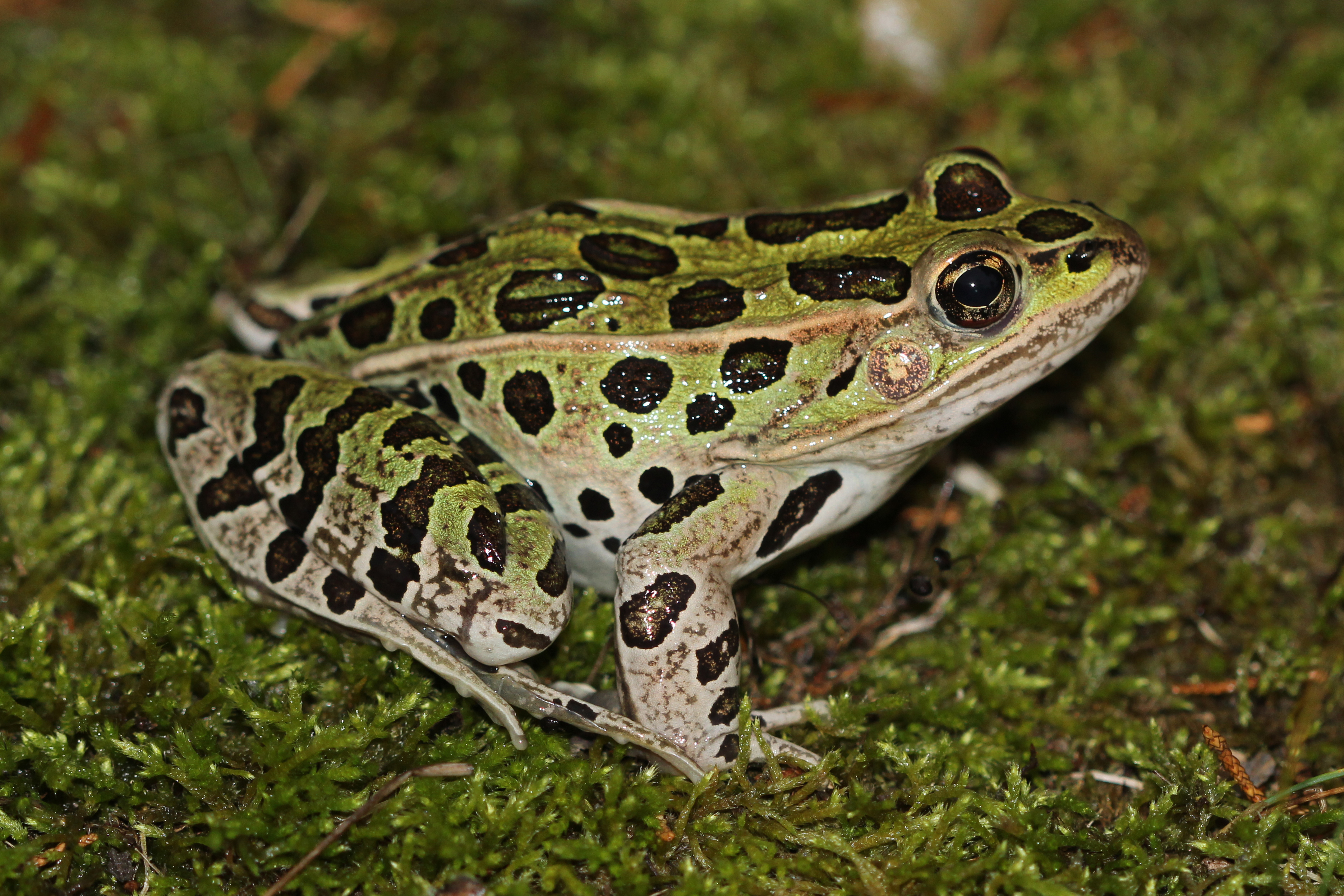
Photo courtesy of Drew R. Davis from Amphibians and Reptiles of South Dakota , taken in Davison County, South Dakota.
During the breeding season, Northern Leopard Frog males use advertisement calls to attract a mate. Their low, drawn-out, rattling snore starts softly then grows louder, lasting a few seconds in total. It is usually followed by several grunts or chuckles. Because their call is soft, it can be difficult to hear it among other calling frogs. In the past thirty years, northern leopard frogs have declined in number and health due to habitat loss, nonnative
predators, and the introduction of pesticides and disease.
Description adapted from text created by Amphibians and Reptiles of South Dakota and the National Park Service.
